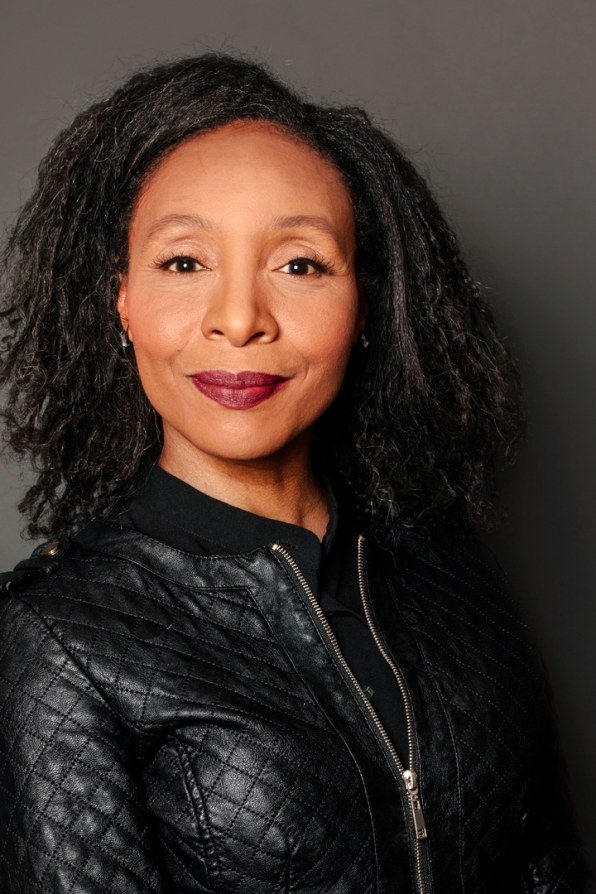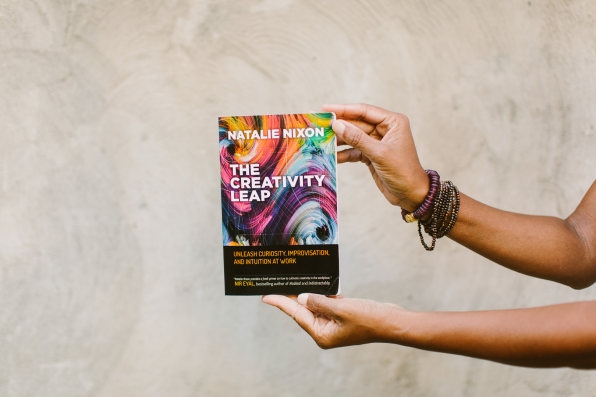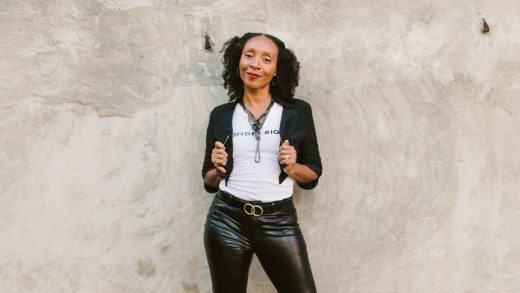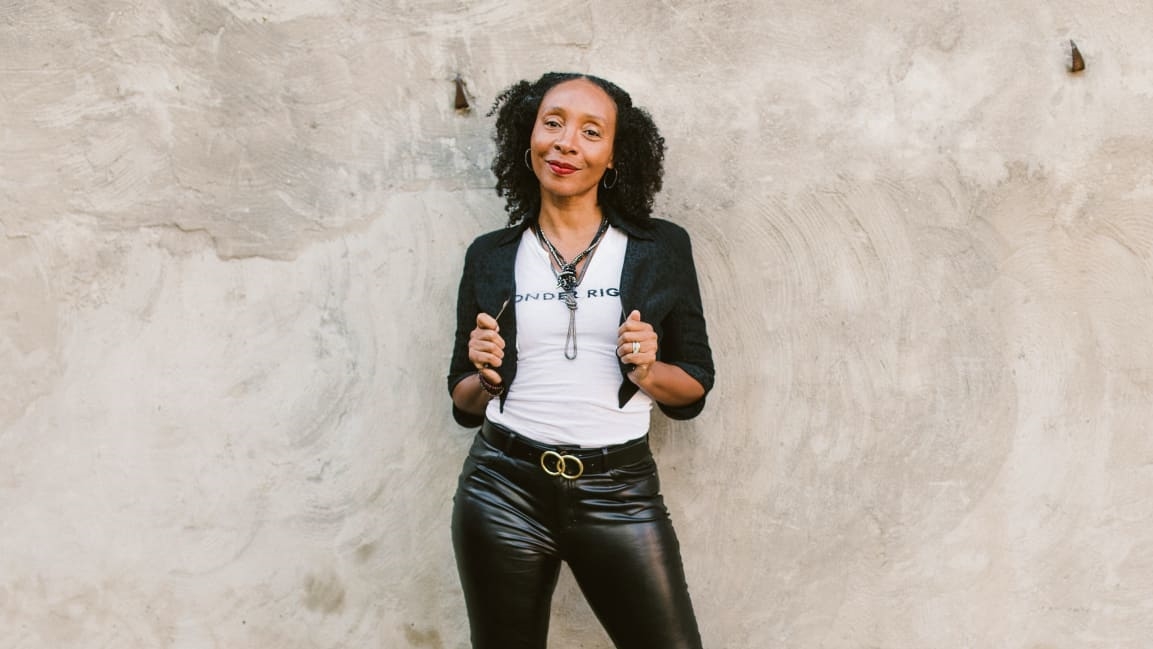How to turn creativity into a rigorous business strategy
Doreen Lorenzo: When did you first realize you were interested in design?
Natalie Nixon: Retrospectively, I think my interest in design stems from my mother. My mother is a fiber artist with an incredible aesthetic. She and the women in my family are very gifted in the fiber arts—sewing, knitting, and weaving. I learned to sew when I was 10 years old. Sewing was always functional art to me, which is the way I also think about design.

[Photo: Sahar Coston-Hardy]
I grew up in a home where my mother repeatedly reminded us that we lived in a small place and had to keep it organized. My parents owned a duplex and always rented out the first-floor two-bedroom apartment, which meant that I shared a room with my sister. I didn’t have my own room until I was a sophomore in college. Growing up, my mother would say things like, “Girls, your home should be a place of beauty that you return to at the end of each day.” When I return to my childhood home now, it is a marvel to me the way my mom designed space! I believe that was my first introduction to design.
How did that influence your education and career path?
I went to Vassar and ended up with a double major in anthropology and Africana studies. Looking back, I realize studying Africana Studies was my first foray into systems design. We were studying the people of the African diaspora through the lens of economics, political science, sociology, and history, so I was learning that when there is a shift in one part of a system, there is a cascading effect in all other areas of that system. In the case of Africana Studies, all these different actors and nodes were part of a system called culture. That equipped me for a very integrative approach to my work.
Then after graduating from college, I’m living in New York City, not making a lot of money, so I go back to what I know. I started sewing all of my outfits for work, primarily because I couldn’t afford all of the pretty frocks in the boutiques in Manhattan and Brooklyn. My friends started saying I could actually sell what I was making. On many subway rides I would think to myself, Well, if I were going to do this, what would I do? Hats are fun. I could do hats. Nat and hat rhyme, I’ll call it Nat’s Hat’s.
A few months later, I naively walked into a boutique on the Upper West Side and introduced myself as a hat designer, hoping to meet the owner and show her my line. She said, “Sure, you’re talking to her. Let’s make an appointment.” I went home and I made about 20 hats; she bought everything outright. That was me tiptoeing into the intersection of business and fashion. And I loved it. I loved going from an idea and a concept to a three-dimensional object that people could use. A few years after that, I entered a master’s program in global textile marketing studying in Israel and Germany. It gave me incredible exposure to the entire vertically integrated industry from fiber to yarn to fabric to cut and sew and finally, to distribution and merchandising. Then after graduating from that program, I was hired by a global sourcing division of the Limited Brands, Mast Industries, and ended up living and working in Sri Lanka and Portugal.
After living and working around the world, what made you decide to return to academia and pursue your PhD?
I was on a plane flying somewhere over Siberia on my way to Hong Kong when I realized, I’m not happy. I’m tired of being in different time zones from family and friends. When people hear about jobs and careers where you’re constantly traveling, it sounds super glamorous, but it can be a real drain personally. I should mention, before I earned my master’s degree in global textile marketing and got the sourcing job with Mast, I was a middle school English teacher. One of the reasons why I left teaching at that stage was because I had gotten the bug for business through Nat’s Hats. I wondered back then, I think I’m a good teacher and now I have both teaching experience and industry experience in fashion—what else could I do? And I did what I now advise a lot of people to do: I started asking questions. I started doing a lot of informational interviews, and through a series of conversations and introductions, I ended up getting an offer to join Philadelphia University, which is now Thomas Jefferson University. I accepted the offer to join their fashion management program as an assistant professor. That’s how I landed in academia. I was basically tired of being on airplanes all the time!
While teaching there one of my mentors told me I should consider getting a PhD to have more options in higher ed. I didn’t like the commitment of quitting my full-time job, though, so I shelved it. Fast-forward to 2005, I was on my way to London when I received an email from a friend who said, “Have you ever heard of this field called design management? It seems just like you. It’s about design, business, creativity and strategy.” I was like, “No, what’s that?” I Googled it. It was huge in Europe and in the U.K. I promptly emailed the directors of PhD programs in design management at three different universities: Leeds, Westminster, and Manchester. Long story short, I ended up applying to the University of Westminster for a PhD in design management and earning a PhD while working full time, in four years—which is crazy. If I had known how hard it was going to be, I would have never done it. But I’m really happy that I did because when I began studying design management it felt like I had finally found this space that was totally integrated between design and strategy. I found the hook to hang my hat.
What did you decide to do after earning your PhD?
Completing a PhD in design management was like a breath of fresh air. It really inspired me to create and launch the Strategic Design MBA program, an executive MBA program that integrated design thinking into how people were learning strategy, leadership, financial operations, and branding. Two years after launching that program, I gave a TEDx talk proclaiming that the future of work is jazz.
That talk catapulted me into getting invitations into companies to show them how to become more improvisational. All these fun little consultancy gigs led me to create Figure 8 Thinking. It began as a side hustle. Figure 8 Thinking was a repository for my practice. Then I realized I was having more fun with these side projects than I was in academia. I’ve never had a five-year plan. Every time I’ve made a transition, zigged away from where I’d been zagging to go in a new direction, was because I listened to my intuition. I fundamentally believe that when we love what we do, when we bring a level of joy and inspiration to our work, we’re really good at it. No one has to tell us to work harder, stay later, or get up earlier. You’re just driven to do that.

Tell us about your award-winning book, The Creativity Leap.
While I was building up Figure 8 Thinking, I was doing a lot of keynote speaking, which I love. At the end of my talks people would ask where they could read more about what I had said. I blog for Inc., so I could have just directed them to the columns I’ve written, but I realized I didn’t have a centralized place where I’d curated my ideas. I quickly realized I needed to write and productize my intellectual capital. So I wrote The Creativity Leap.
One of the things I wanted to do was offer a simple and accessible way for people to think about creativity. In a lot of my earlier consulting I was invited in to help clients build cultures of innovation. But in my view, they were starting at the wrong place. We were throwing around the “I” word a lot—innovation. I realized what we should really be starting with is creativity.
Now, there’s a challenge to that. If I am advising and recommending that we actually start with creativity, there’s a bit of resistance because people don’t really understand creativity. People ghettoize and conflate creativity only with art and artists. The way I define creativity is that it’s about toggling between wonder and rigor to solve problems. Asking “what if” questions, being audacious, in awe, pausing and encouraging curiosity is all about wonder. Discipline, time on task, and focus is the rigor. Creativity is not doing whatever you feel like—it requires the wonder and the rigor. My hope is that the book helps people and companies that previously were not thinking of themselves as creative realize that if you are intentional about toggling between wonder and rigor to solve problems, to produce novel value at scale, then you are being creative.
How do you get people to understand the nuances of creativity and turn it into something that’s tangible?
For that I developed the 3i Creativity framework: inquiry, improvisation, and intuition. I interviewed over 50 really diverse people from a range of sectors and professions for The Creativity Leap. I consistently found that they all incorporate intuition in decision-making. The most successful leaders unabashedly embrace and talk about the role of intuition in building strategy. Inquiry is about asking new, better, and different questions. Sadly, a lot of our educational system only equates curiosity with ignorance. But asking questions clearly leads to discovery, exploration, and experimentation. Lastly, improvisation is being so rooted in the present that you’re able to be adaptive and be all about the build.
When I consult with companies, I like to start by auditing the current state of the business, and that starts with three domains: of people, process, and place. We can’t design an audacious future state if we don’t have awareness about where we currently are. What we’re talking about is shifting mindset, which leads to shifts in behaviors, which ultimately leads to culture change. Some organizations are still a bit myopic in terms of what they understand as the external environment, and that’s often because they’re not practicing enough lateral thinking. They aren’t curious enough to explore adjacent-sector companies to discover what could be learned from them. My goal is to equip them with the ability to start looking at very different sources of inspiration and learning. I actually encourage thinking in questions, which I find is very liberating. It’s not just an exercise; it’s a new way of thinking, which gives people permission to ask “What if?” It helps to identify the business’s present state and audacious future state.
What advice do you have for young and creative people aspiring to enter this realm?
The headline of my advice is “Follow your heart!” However, the subheading beneath that headline should warn about how scary following your heart is. I always think that if you are equal parts terrified and exhilarated, you should leap for the opportunity. Your terror will ground you, but the exhilaration will keep you optimistic and dreaming. Understand that curiosity means ceding control of your own path and that intuition is about bravery before mastery.
(37)



